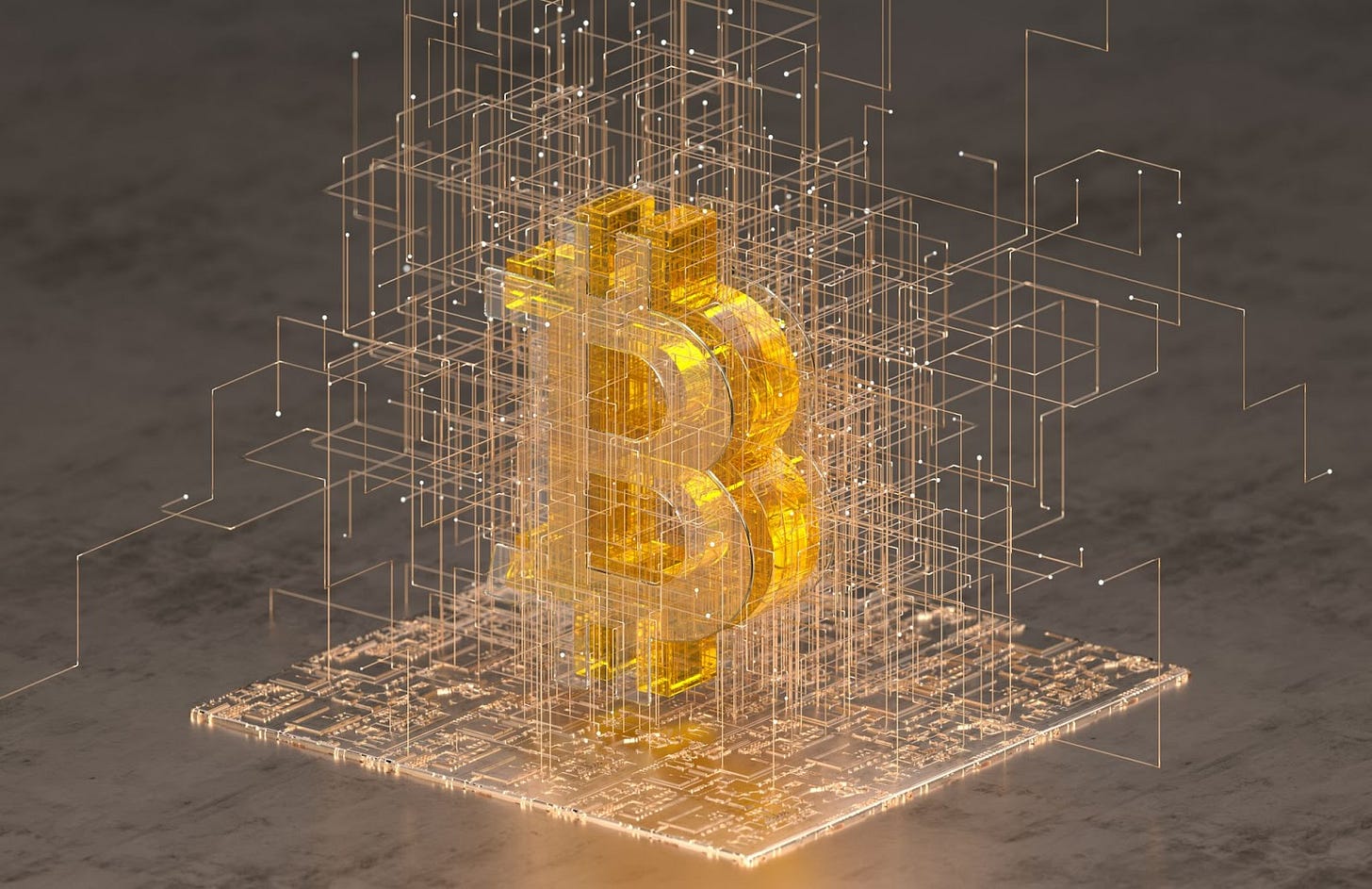There is no second best… NFT chain?
Behind the Bitcoin NFT buzz!

The 101 🆕
The Bitcoin community has been grappling with a recent rise in Bitcoin NFT mints after Ordinals — a protocol that converts individual satoshis, the smallest bitcoin denomination, into non-fungible digital artifacts — launched earlier this month.
Ordinals has been met with derision by the “old guard” hardliner Bitcoiners, not unlike how some of these very same folks argued against Bitcoin-based Counterparty NFTs as spam back in 2014.
In contrast, Counterparty veterans and new and old experimenters alike are hailing Ordinals’s approach as potentially revolutionary for Bitcoin’s NFT scene going forward. Moreover, these new NFTs are noticeably driving up transaction fee revenues for Bitcoin miners, potentially pointing the way to a future in which cultural activity comes to help replace the ever decreasing block subsidy on Bitcoin.
Wow, this ordinals thing is really inflating blocks size and weight. And it definitely generates a lot of fees for miners! pic.twitter.com/2piw2uJLjc
— Fanis Nostradalakis (@FanisMichalakis) January 31, 2023
How Ordinals NFTs work 🧠
Inscriptions are finally ready for Bitcoin mainnet.
— Casey (@rodarmor) January 20, 2023
Inscriptions are like NFTs, but are true digital artifacts: decentralized, immutable, always on-chain, and native to Bitcoin. 🧵https://t.co/a4dK7zdITS
Ordinals is centered around a newly developed, Bitcoin-native mechanism called Inscriptions. Per the Inscriptions mainnet announcement post:
“Inscriptions are digital artifacts native to the Bitcoin blockchain. They are created by inscribing sats with content using ord, and can be viewed with the ordinals explorer. They do not require a separate token, a side chain, or changing Bitcoin.
Inscriptions are created by including content, like an image, text, SVG, or HTML, in an inscription transaction. The content is included in the transaction witness, which normally contains signatures and other data proving that a transaction is authorized.
[…] When mined, the inscription is made on the first sat of the first output of the transaction, permanently and inexorably marking it, distinguishing it from its fellows. It is no longer just a sat, it is an intertwined component of the long and confusing tale that is human art and culture.
Using ordinal theory, the unspent output containing an inscribed sat can be found, and its movements and ownership tracked across time and transactions, allowing inscriptions to be traded, gifted, bought, and sold.”
The onchain factor 🔗
The media in Ordinals mints are stored entirely on the Bitcoin blockchain, meaning there are no external dependencies, e.g. private servers or IPFS. These NFTs will be forever retrievable from Bitcoin.
looks like all EtherRocks were transposed to Bitcoin Blockchain via ordinals pic.twitter.com/wjZ5nO6kDY
— notsofast (@notsofast) January 30, 2023
Of course, it’s possible in a different manner to mint totally onchain Ethereum NFTs, though onchain minting on Ethereum is expensive. Interestingly, then, Ordinals allows for onchain Bitcoin NFTs to be minted much more affordably than onchain Ethereum NFTs.
A byte of CALLDATA in ETH L1 is 16 gas. 360kb = 5,760,000 gas. Current gas cost is 15 gwei. 5,760,000 * 15 = 86,400,000 gwei = 0.0864 ETH = 140 bucks.
— Eric Wall | OP_😺 (@ercwl) January 29, 2023
$20 vs $140, 7x difference. https://t.co/1skiffb7Cq
In the Ethereum ecosystem, onchain NFTs are celebrated by many for being the highest quality and most resilient metadata storage avenue possible. In kind, there’s reason to believe onchain digital artifacts on Bitcoin may come to be similarly celebrated thanks to their robustness, too.
What people are saying 🗣️
1. Dennis Porteaux wrote an awesome, balanced deep dive on the technical and factional contexts around Ordinals:
Illegitimate bitcoin transactions: the longstanding compromise on transaction sizes, how Taproot accidentally blew it up, and the nascent NFT protocol emerging in its wake
— pourteaux (@pourteaux) January 25, 2023
(new from me)https://t.co/GEgxPHfAT9
2. Eric Wall highlighted the irony of hardline Bitcoiners being okay with censoring Bitcoin NFTs:
Bitcoin maxis roflcoptered at Ethereum validators censoring OFAC transactions (it wasn’t actually the case, primarily it was a popular but optional MEV block builder that the validators defaulted to use) and are now themselves deliberating ways of censoring Bitcoin NFTs. pic.twitter.com/zjMek9c8pK
— Eric Wall | OP_😺 (@ercwl) January 29, 2023
3. Casey Rodarmor argued against Bitcoin Essentialism:
I understand the argument that NFTs are lame and stupid, but I don't understand the argument that NFTs are somehow *illegitimate*. Bitcoin has transcended its original creator and purpose. Bitcoin is not *for* some things and *not for* other things. It just is.
— Casey (@rodarmor) January 29, 2023
The big picture 💡
The rise of Ordinals isn’t some flash in the pan in the Bitcoin ecosystem, as the Bitcoin NFT scene has been blossoming anew since last year.
For example, artist, data scientist, and NFT historian Chainleft minted PEPERMANENT, a totally on-chain Bitcoin NFT experiment, in Nov. 2022 prior to the current Ordinals buzz.
– My first creation on Bitcoin
— Chainleft (@ChainLeftist) January 4, 2023
– Also my first 100% on-chain stored NFT on Bitcoin
– Also. Was Pepe ever stored on Bitcoin before 2022-11-23? Don't tell me this is the first 100% on-chain Pepe on Bitcoin… It surely isn't?
Drop mechanics 👇 https://t.co/uThg78VpJ4
This blooming NFT activity is really interesting when you can consider the fact that Bitcoin desperately needs a teeming blockspace market to develop in the years ahead if miners are to earn enough to stick around and want to keep securing Bitcoin as the BTC block subsidy keeps halving every four years.
Ordinals, then, is such a step in the direction of a teeming blockspace market on Bitcoin, even though hardliners want to preserve blockspace for only currency use cases. We’ll have to see how things shake out from here, but either way Ordinals NFTs are here to stay.



